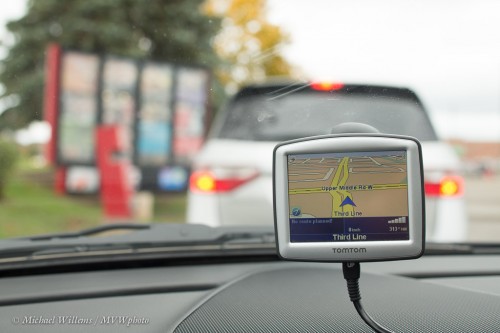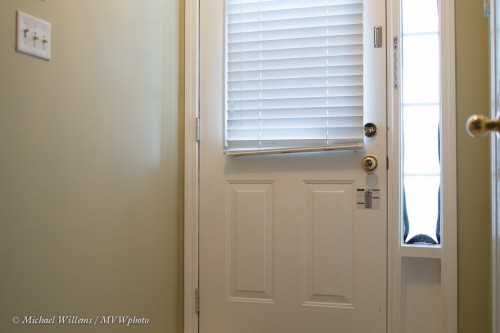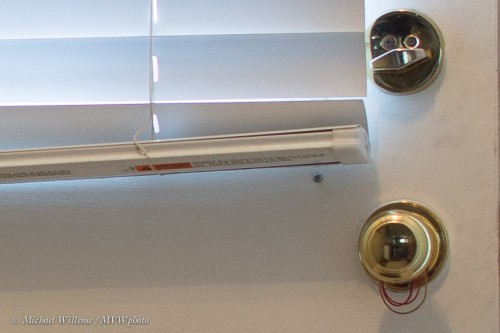I frequently point out to my students that there is no such thing as “manual” – there are many “manuals”. You can set (not sex) exposure manually. Or focus. Or flash power. Or focus point selection. And so on.
So today let’s talk about manual focus. When you you use manual focus?
If you are me, the answer is “fairly frequently”. Like when I was picking up lunch just now:
The full list of reasons can include:
- Because you like having control.
- Because your lens only supports manual focus.
- Because you are better than your autofocus system.
- Because you are doing macro shots and accurate focus where you want it is critical.
- Because the scene has no clear focus areas (your camera needs good light and good contract).
In my case, all of the above sometimes apply. The AF system is quicker, and pretty good; but I am pretty good also.
My front door, earlier today:
Which as you can see is sharp:
So try doing manual focus for a day. Set the switch on your lens to “M” and do it by hand.
The best technique is to go back and forth around the sharpest point, making the oscillations smaller and smaller. While this is slower then the AF system, it can rival, or sometimes exceed, its results, especially on full-frame classical SLRs, with their bright viewfinder and their clear sharp view. It is a little trickier on smaller-frame SLRs and on transparent mirror cameras like some Sony cameras, but it is still doable.
When do I not use manual focus?
- When the subject is moving
- Especially when I am using AI Servo/AF-C mode (the AF system keeps tracking the subject).
- When I am in a hurry.
But failing this, manual can be a good way to do it.
Oh, and my lunch? A Big Mac, and taken with the Canon 45mm Tilt-Shift lens – a lens which only has manual focus abilities.




Sex exposure? I need a camera like that!!!!
Oops! I’ll fix that. Reluctantly 🙂
“(your camera needs good light and good contract).”
For those who are new to this, auto-focus uses contrast to determine focus.
In the days before computer driven cameras, manual focus was the norm and cameras had focusing screens to help you focus. New cameras just display the image and it is left to your devices to determine if focus is correct. Most viewfinders in current dSLR’s have diopters, a little knob sits beside the viewfinder, rotating the knob focuses the viewfinder for your eye — adjust it until the light meter display is sharp, or the focus points are sharp — then when your scene looks in focus it will be in focus in your picture.
New cameras are designed to use auto-focus and in a majority of photos the camera can focus faster and more accurately than a person. Macro where you want to focus closer than auto-focus will, and very low contrast scenes are the exception. Of course if you are using a manual focus lens, that is your only option.
I got into still photography in 1999, and have done 99% of my work in a digital form. (I did use slide film on a 35mm camera for a magazine shoot.)
From what I’ve heard, full frame (and 35mm) cameras have a larger view frame than the digital cameras I’ve used (including the 1D, 10D, 30D and others.)
This would make it easier to use manual focus, but in my normal operations I find that doesn’t work well for me, so I do the next best thing.
I’ve got my focus set up on another button, and do it before I take a shot.
When I shoot in nightclubs (which I used to do a lot for various publications) I’d use actual manual focus more often because any auto-focus didn’t work at all.